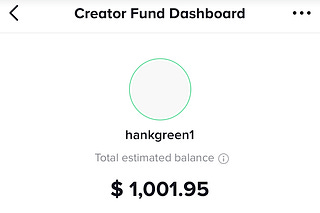Hey, thanks for checking out “Pay Attention,” a newsletter that definitely is not going to come out on any regular schedule. But in order to get some concepts straight, I’m going to start out with my analysis anchors.
We’ve all got anchors. Systems we use to understand the world. And I’ve got a set of anchors through which I analyze media. I recognize that anchors are generally talked about in negative ways, because they create bias. We send to see things that fit with our anchors.
But denying them is even worse, because we have them even if we don’t think we do. I think it’s much more important to recognize and proclaim your anchors than to ignorantly believe they are not there. It’s very likely that we’ll go deeper into all of these as I keep making stuff.
Anchor 1: Fractured Fame
The overall tendency of the last 70 years has been toward more and more people having access to attention and influence. More people get to be professional creators and they get to have more direct control over their relationship with their audience. Many people are famous to some, but anonymous to most.
Anchor 2: The Algorithm is the Message
McLuhan’s adage “The Medium is the Message” remains true. The systems through which content is delivered and discovered has a massive impact on what content ends up being created (and what content is ignored or never made). But now, those systems are not media as much as they are platform and algorithm. Because of the above, platforms each individually come to define their own form of content. A TikTok is as different from a YouTube video as a movie is from a television show. And YouTube is as different from TV as TV is from radio.
Anchor 3: Attention is the Internet’s Reserve Currency
Fame is finite. There are only so many human minds, and only so much time for them to pay attention to each other. Attention is quickly becoming both the most desired resource, and the most scarce resource. Lots of people get this, and they would rather gather attention than money. That makes sense, as it’s actually much easier to turn attention into something you may need (support, money, relationships, etc) than to do the reverse. Creators these days…they have the attention, and the best of them are experts at currency conversion.
Anchor 4: The Arc of the Creator
Given long-term success, every self-aware creator goes through a predictable arc. First, they create primarily for attention, and that can be enough for a long time. But eventually, creators either need to find ways to be paid for the value they create, or they will leave a platform. Platforms either need to create stable economic ecosystems (YouTube), or encourage the creation of a constantly renewing crop of creators (TikTok.)
Anchor 5: Platforms Are the Buildings, Not the Businesses
The sources of value on social media platforms are not the platforms. The value is the audience, and the audience is being brought to the platform by the creator. Platforms are the places where businesses are built, they survive by creating tools for business to get done and levying taxes on the businesses. Some of them even take 100% tax on the businesses (Facebook) because the people creating the value are getting reward in non-monetary ways.
This is by no means a complete list of my contemporary media analysis anchors, but it’s a start. Anyway, my book came out this week, and if you all go and buy a copy right now it will really help me maybe get on the NYT list! Those first week sales are very important, so I’ll just leave this here.
If you have questions for me to maybe answer about creation, media, or the internet, hit me up at h@nk.cm
Subscribe to Pay Attention
Attention is becoming the one true currency, and that affects everything.








As a young professional entering the media industry from behind the scenes, I look forward to reading your insights. DFTBA
This was an interesting take on modern culture, looking forward to more.